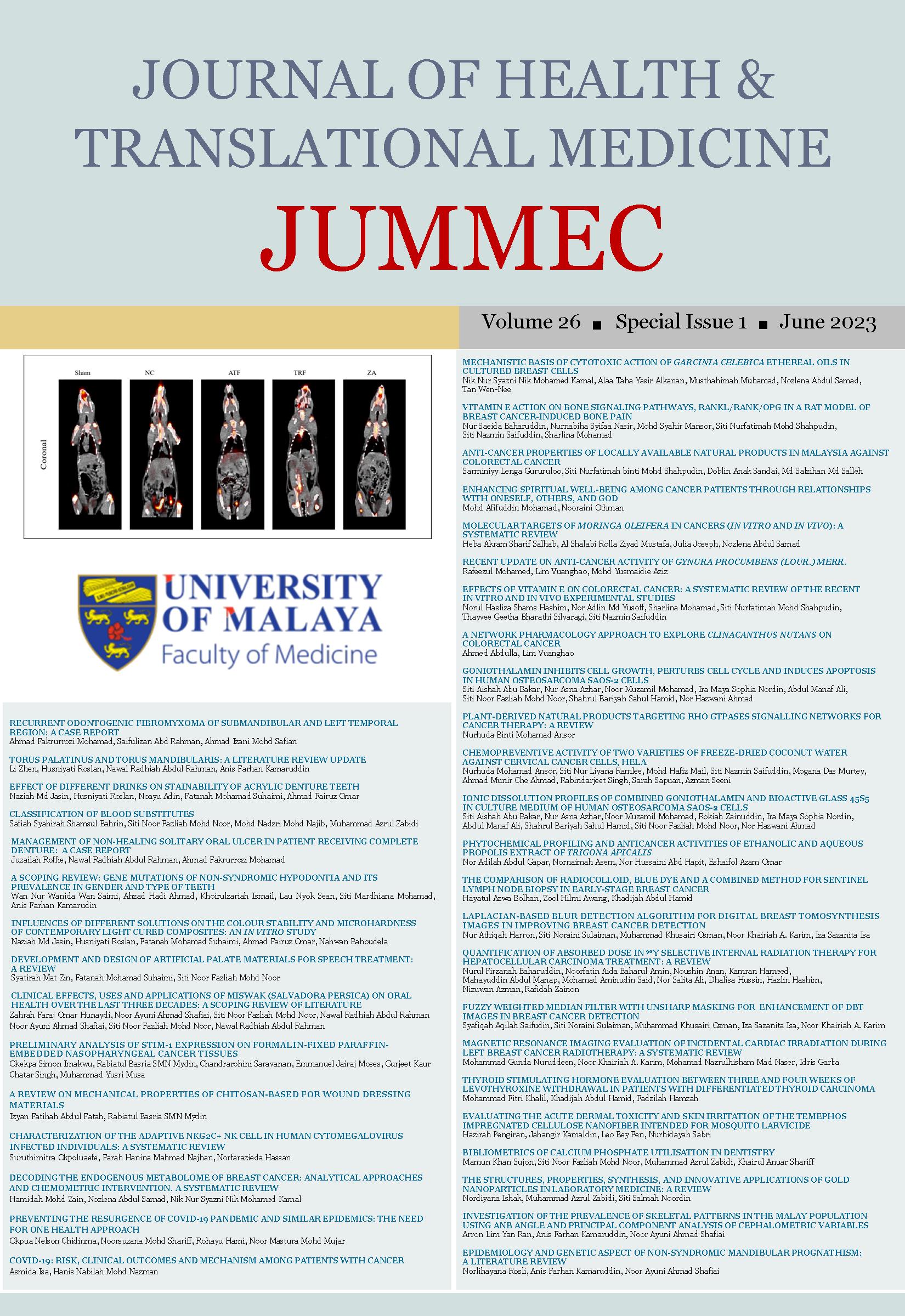PHYTOCHEMICAL PROFILING AND ANTICANCER ACTIVITIES OF ETHANOLIC AND AQUEOUS PROPOLIS EXTRACT OF TRIGONA APICALIS.
Received 2023-01-12; Accepted 2023-02-27; Published 2023-06-06
DOI:
https://doi.org/10.22452/jummec.sp2023no1.13Abstract
Propolis is an important structure that stores and protects honey in the stingless beehive. Despite its known benefits, there is lack of research that looks into the antioxidant and anticancer effects of propolis produced by a Malaysian stingless bee species, Trigona apicalis. Propolis was extracted using ethanol and aqueous and tested for antioxidant assay. The total phenolic and flavonoid contents were determined for both extracts. The in vitro cytotoxicity was assessed manually against the HeLa cell lines and the extracts were analyzed using GC-MS for potential compounds present. Ethanolic extract of propolis (EEP) was revealed to be a better scavenger of DPPH and ABTS with higher phenolic content; 85 µg gallic acid equivalents/g. Meanwhile, the aqueous extract of propolis (AEP) has higher flavonoid content; 147.44 µg quercetin equivalents/g. EEP and AEP have IC50 of 31.25 and 120 µg/mL respectively during a viability test against HeLa cells and the proliferation activity was constantly at a lower rate as compared to the control which occurred in 5 days. Both propolis extracts induced late apoptosis and EEP arrested at G0/G1 phase while AEP arrested at S phase. Several compounds have been identified, whereby 1,6-cyclodecadine,1-methyl-5-methylene-8-(1-methylethyl)-s-(E,E) was predominantly detected in EEP, while 9-isopropyl-1-methyl-2-methylene-5-oxatricydo[5.4.0.0(3,8)] undecane was major compound in AEP. While further studies are required to validate the above findings, propolis produced by local stingless bee species seems a suitable research candidate for discovery of potential anticancer agent.
Downloads
Downloads
Published
Issue
Section
License
All authors agree that the article, if editorially accepted for publication, shall be licensed under the Creative Commons Attribution License 4.0 to allow others to freely access, copy and use research provided the author is correctly attributed, unless otherwise stated. All articles are available online without charge or other barriers to access. However, anyone wishing to reproduce large quantities of an article (250+) should inform the publisher. Any opinion expressed in the articles are those of the authors and do not reflect that of the University of Malaya, 50603 Kuala Lumpur, Malaysia.


